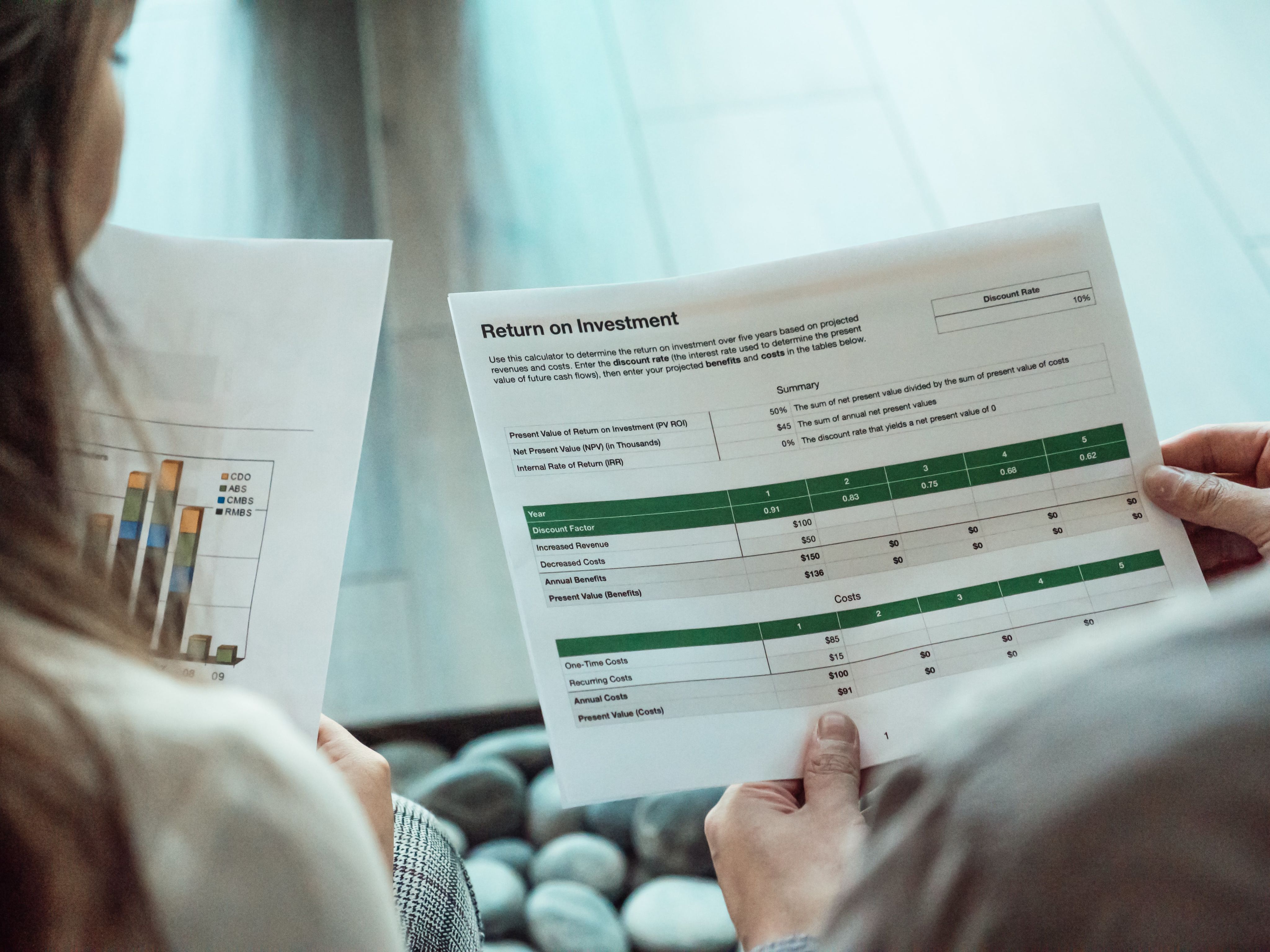Why government bonds are back in fashion
An exploration of the role they can play in portfolios

Anyone who has invested in fixed income consistently over the past few decades will have seen how yields can fluctuate.
Sometimes bonds are in favour, other times equities seem to be the mode du jour.
It was not so long ago that people were asking the question, 'Is the 60:40 portfolio dead?', and with good reason – equities were on a high, and yields on bonds had been low for a long time.
But with inflation leaping up, and the lever of rate rises being cranked by central banks to keep inflation in check, yields on bonds have become very attractive, as commentators in the CPD feature below explain.
So what is their place in a portfolio? And how should advisers and their clients be approaching the diversification and allocation questions when it comes to finding the right fit?
The CPD feature that follows aims to explain some of the factors that might attract and affect clients when it comes to fixed income investing, and how to find a bond allocation that works for your clients.
simoney.kyriakou@ft.com

CPD: Bonds are back in fashion but how do they fit within portfolios?


Bond investments can work nicely within a portfolio for diversification and yield. (Ann H/Pexels)
Bond investments can work nicely within a portfolio for diversification and yield. (Ann H/Pexels)

Choosing the right option takes time and consideration. (Mister Mister/Pexels)
Choosing the right option takes time and consideration. (Mister Mister/Pexels)

The divergence in opinion and the high starting point for yields offer some attractive opportunities for investors, according to commentators. (Kindel Media/Pexels)
The divergence in opinion and the high starting point for yields offer some attractive opportunities for investors, according to commentators. (Kindel Media/Pexels)
Just a few years ago, investors were unlikely to look at government bonds as a serious money-making opportunity.
Yields were low and only expected to rise. Investors who hold bonds during a time when yields go up tend to lose money as when yields rise, prices drop.
Today, though, the picture could not look more different. Yields have climbed towards multi-year highs over the past year and as central banks hint that they are at or nearing the end of rate hikes, now could be one of the most fruitful entry points into the gilt market for many years.
So, why exactly are government bonds back in fashion, how can you use them in a balanced portfolio, and what type of investor are they best for?
This guide will explain the opportunities in the gilt market for investors and advisers, and comes with an indicative 30 minutes of CPD.
A changing market
While bonds are typically thought of as a 'safe' investment, they have had a tumultuous couple of years, and investors have paid the price.
“Investors in sovereign bonds from all developed governments have experienced volatility and downsides that are unusual for bond investors,” said James Klempster, deputy head of multi-asset at Liontrust.
“The post financial crisis era led to government bond yields falling ever lower thanks to both lowly inflation and extraordinary monetary policy. Then, the rapid reversal of yields which began in 2021 and accelerated through 2022 caused significant losses for government bond investors.”
During the pandemic, the yield on a 10-year UK gilt was as low as 0.2 per cent. It was around 3.25 per cent in November last year, peaked at 4.75 per cent in August and is now about 4.1 per cent.
This has provided a very tough backdrop for investors
As yields for the most part were heading dramatically skyward, bond prices were doing the opposite. The Investment Association’s UK Gilt sector lost an average of 6.18 per cent in the year to October, and in the year before that, it lost 22.6 per cent.
“Government bonds have struggled over the past year or so due to high inflation and central banks increasing interest rates,” says Richard Carter, head of fixed interest research at Quilter Cheviot. “This has provided a very tough backdrop for investors.”
Is now the time?
But while existing investors might have felt the pain of falling prices and rising yields, new investors are now looking at an attractive entry point into the market.
“Yields have followed interest rates, and for the first time since quantitative easing following the financial crisis, bonds are looking attractive again,” says Darius McDermott, managing director at Fund Calibre.
The yields offered on gilts have not been at this level since 2008, so on a forward-looking basis these bonds are offering higher annualised nominal returns than at any point since the financial crisis.
“Current yield levels now offer the prospect of positive real returns from government bonds,” says Michael Siviter, senior portfolio manager at Invesco Fixed Income.
“The returns have also risen relative to other assets. Equity and credit markets have not had the same adjustment in valuations, making relative prospective returns more favourable for government bonds relative to other assets than they were previously.”
It is not necessarily the case that government bonds will generate higher returns than equities or credit, Siviter said, but that investors were now not giving up as much return for an asset with very low risk of capital loss.
The key reason the bond market looks attractive at the moment is the outlook for yields going forward.
While yields are currently high, economic indicators suggest they may not move much higher, which is good news for fresh investors because as yields fall, prices rise.
Laith Khalaf, financial analyst at AJ Bell, adds: “The yields on government bonds have risen substantially over the past two years, causing a great deal of pain to existing holders but offering a much more appealing investment opportunity for fresh investors.
“Rising interest rates have led to a paradigm shift in bond returns and investors would do well to take a fresh look at this asset class.”
Yields tend to at least somewhat follow interest rates, and central banks are suggesting that they are at or are nearing the end of rate rises.
The Bank of England’s base rate reached 5.25 per cent in August, but the monetary policy committee has held it at this rate since.
The US’s central bank, the Federal Reserve, has also held its rate target at a 22-year high of 5.25 to 5.5 per cent.
Inflation also measured 4.6 per cent in the year to October, which was lower than expected, in a sign that central banks will not need to move rates any higher.
A balancing act
Experts have another good reason for being optimistic about the gilt market for investors currently: their revival means that they are able to play their traditional role in a portfolio of providing protection during times of market stress.
The idea is that stocks and bonds will behave differently to the same economic event, so there will usually be one part of your portfolio that does well. While stocks typically perform well when the economy is strong, bonds are better in a weak economy.
“This traditional role of government bonds was challenged when interest rates and yields were very low,” says Hal Cook, senior investment analyst at Hargreaves Lansdown.
Rising interest rates have led to a paradigm shift in bond returns
“When investors bought those bonds, they were accepting a loss. And since the start of 2022 bonds have lost more money than shares, so have not provided that diversification as you would traditionally expect.”
However, it is expected that, thanks to the reset of bond values and yields, the bond market may go back to a more traditional profile.
Amanda Stitt, portfolio specialist at T Rowe Price, says higher bond yields had “burnished” the traditional appeal of fixed income in multi-asset portfolios as a diversifier, as investors would once again be able to take shelter in government bonds when risk markets weakened.
“As major central banks reach the end of their aggressive monetary policy tightening campaigns and inflationary pressures recede, the negative correlation link between stocks and bonds can prove to be durable,” Stitt adds.
“As central banks ease policy to support a weakening economy, government bonds could offer an attractive source of capital protection in this environment.”
Eduardo Sanchez, investment research analyst at Square Mile, agrees. He says that following the increase in rates, government bonds could play their “traditional diversification role” in portfolios and offer protection against a negative scenario for equities.
However, Arif Husain, head of international fixed income at T Rowe Price, put forward a word of caution. He argues that at some point, developed market governments will need to simultaneously boost sovereign debt issuance, meaning yields will need to increase across the board to attract buyers.
“Governments across the globe will need to boost sovereign debt issuance to pay for ballooning fiscal deficits, largely as a result of Covid-era policies,” Husain adds.
“A lot of private sector leverage moved to the government balance sheet, and the debt collector is now at the door.”
Who, what and where
All investors could benefit from government bonds, analysts say, so it is worth considering how they might work for a range of clients.
“Government bonds are a great option for any kind of investor, ranging from income seekers as well as stock investors, as while they can provide a regular income, they can also bring diversification and protection in case of a downturn,” says Althea Spinozzi, senior fixed income strategist at Saxo.
Stitt adds that income investors would be particularly wise to look at gilts, seeing as yields were considerably higher than dividend yields in major stock markets, and so could offer an attractive source of income.
And those investors that are after growth could look at low coupon bonds, suggests Dan Boardman-Weston, chief executive at BRI Wealth Management.
Government bonds could offer an attractive source of capital protection in this environment
He adds: “The other opportunity for UK investors is that there is no capital gains tax payable on any capital gain arising from investment into gilts.
"This can make short-dated gilts with a low coupon a far more efficient means of saving money for a few years than traditional savings accounts, particularly for higher or additional-rate taxpayers.”
How exactly to access the gilt market and which areas to invest in will depend on your client’s circumstances, but McDermott recommends holding more general and flexible bond funds that contain a spread of short and longer dated bonds.
He points out the Allianz Strategic Bond fund and the Jupiter Strategic Bond fund as good options in this area.
Chris Metcalfe, chief investment officer at Iboss, also thought that the best way to access the gilt market was through active, strategic bond funds.
Metcalfe says: “It is too early to say with certainty that inflation has peaked for this cycle or the timing of any rate cuts.
“The divergence in opinion and the high starting point for yields offer up some attractive opportunities for investors, especially the active managers in the strategic bond space. In recent months, we have been increasing our exposure to such funds in anticipation of this situation.”
He adds that some retail and professional investors may need to try to forget the past few years of bond investing, as many were burned by the collapse of bond prices.
“Investors often find it difficult to stay invested or re-invest in areas where they have lost money, even if it’s only for some people a paper loss,” he says.
However, the situation now is that government bonds offer a much better risk-reward profile than they have for many years.
Imogen Tew is a freelance journalist


